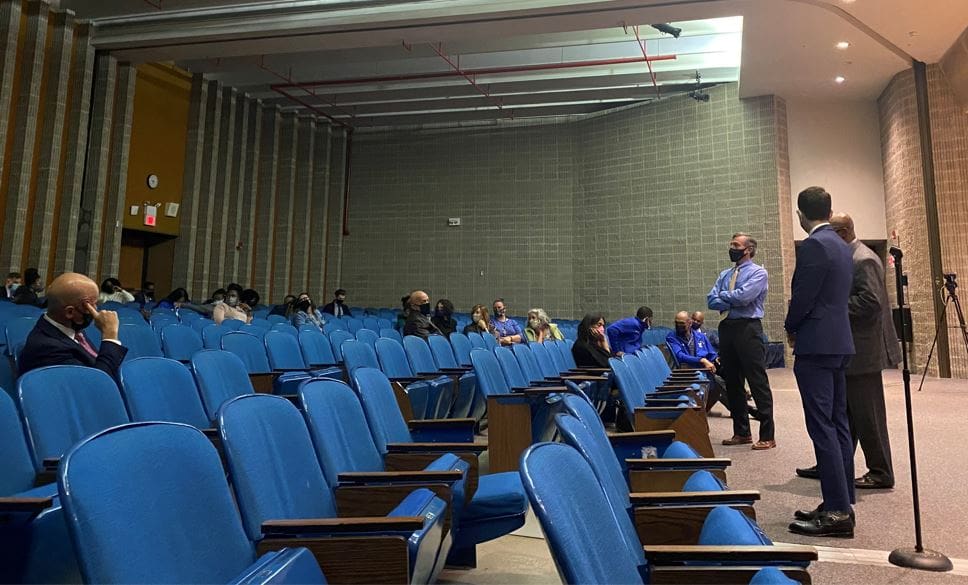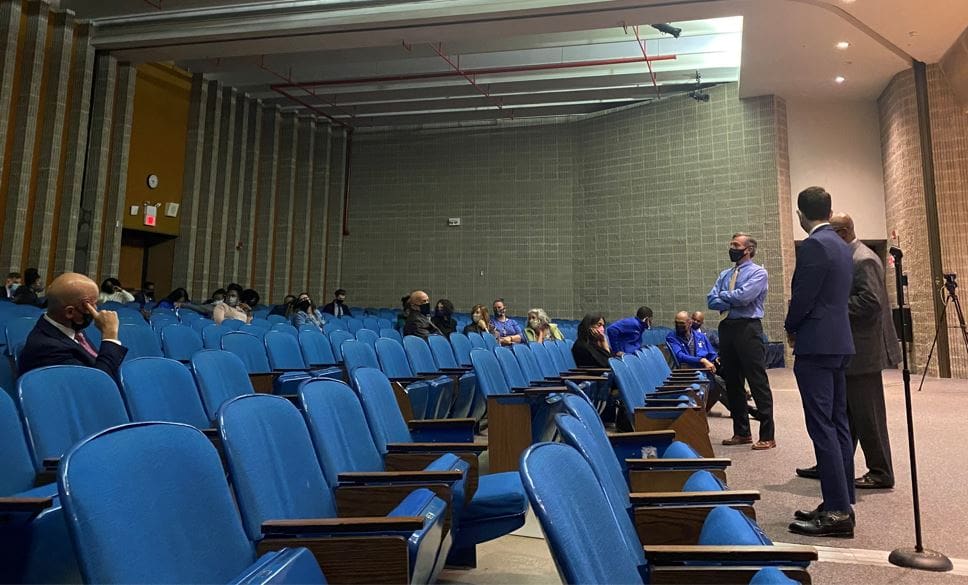
Gov. John Carney takes questions about the Wilmington Learning Collaborative project during a December town hall.
A state program that wants to centralize learning for Wilmington students now split between three districts is waiting to see whether those districts vote to join the effort.
The Wilmington Learning Collaborative, a joint project of the Delaware Department of Education and Gov. John Carney’s office, wants the districts to agree to form a board to oversee just the city students among the districts.
Collaborative organizers have had more than 100 meetings with various groups, including the district boards and town halls inviting residents to talk. A virtual town hall is set for Thursday, Jan. 13, at 6:30 p.m. at governor.delaware.gov/wlc/.
Red Clay and Christina boards are expected to vote on whether to join the project this month, and the Brandywine school district in February.
James Simmons III, chief equity officer of the Delaware Department of Education, said he feels optimistic about the plan’s chances, partly because no one has actively opposed it.
Many people, though, have questions about how the board will be chosen, who will be on it and what powers it will have. The planners can’t answer that.
“What we’re saying is that we’re not coming to you with a prescribed plan,” Simmons said. “We’re coming to you to say let’s work on this plan together so that we’re building this completely as a collaborative, and you can’t call it a collaborative if you’re coming in with prescribed answers, right?”
The organizers used to say they wanted the organization, which will oversee kindergarten through eighth grade, to be built from the bottom up. Simmons said they now recognize that could be taken as derogatory and that’s not how they mean it.
They want those who have boots on the ground to have the greater say, Simmons said.
“We want to know that those people who are actually doing the work have the input into what this should or shouldn’t be,” he said.
Red Clay, Christina and Brandywine are three of the four school districts who educate Wilmington children through a confusing decision made under desegregation rulings in the 1970s. Colonial also has city students, but they are bussed into the suburbs and don’t stay in the city for classes.
The number of city students in each district comprises 15% or fewer of its student body, which means decisions made for the majority often don’t work for them.
The collaborative will be designed to focus on programs and resources that bear on issues that affect city learners in much greater degree than they do suburban learners, including poverty, crime, trauma, food insecurity, transiency as families move, and more teachers leaving city schools.
One thing that the collaborative may be able to do is create a unified curriculum for city students. Many of the students move often, and moving into a new district can mean a completely different curriculum with different requirements.
Red Clay is expected for vote on the issue Tuesday, Jan. 11. Christina’s is the Jan. 19, and Brandywine’s vote may come Feb. 7.
Carney and Simmons held four public town halls in Wilmington schools in December to answer questions and promote the plan.
Simmons said it’s possible that if Red Clay and Christina vote to join the collaborative, organizers may begin meeting with them about a possible memorandum of understanding before Brandywine even votes.
That would allow organizers to take what they discussed with Red Clay to Christina or Brandywine and say, “Here’s some of the things we discussed,” as a way of moving the project forward, he said.
Even if the districts vote to join the process, they are not required to adopt the final product, Simmons said. Any of the systems could back out if the boards don’t wish to continue, he said.
The project planners hope to finalize the memorandums of understanding in February, so they can be voted on by district boards in March.
From April through June, they hope to continue goal-setting, designing the collaborations and continue community engagement.
If that works out, the program would officially start in July, which is the start of the state’s fiscal year 2023.
Share this Post




